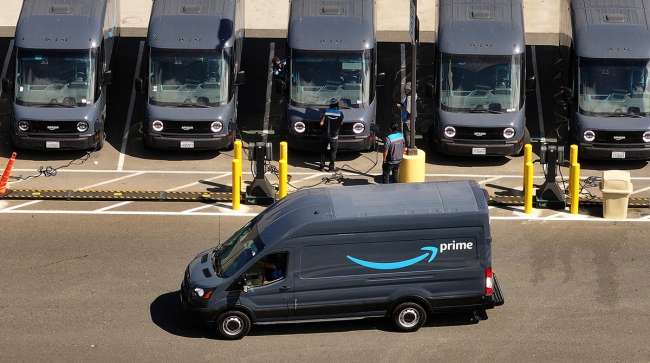Introduction to Changing Dynamics
The interplay between tariffs and sales events like Amazon’s Prime Day is more than a mere economic statistic—it’s a reflection of how logistics and consumer behavior intertwine. Let’s take a closer look at the tariff challenges that sellers face and how this impacts the logistics landscape during peak selling seasons.
The Clash of Tariffs and Consumer Sales
As the summer rolls in, so does the much-anticipated Prime Day, a phenomenon that typically sees a huge surge in consumer spending. However, this year, the shadow of shifting tariffs has prompted some sellers to rethink their participation. Tariffs can elbow their way into logistics, impacting pricing strategies and prompting brands to either adapt or sit on the sidelines.
Understanding Tariffs’ Ripple Effect
The challenge lies not only with consumer spending but also with how tariffs affect product pricing on a broader scale. Sellers are grappling with complexities resulting from fluctuating tariffs, particularly as they pertain to specific categories such as electronics and apparel. Recent analysis suggests that this pressure could lead to changes in purchasing patterns among consumers, as they remain wary of inflated prices.
The 2023 Summer Sales Landscape
Starting on July 8th and running for four days, this year’s Prime Day isn’t just about discounts but also acts as a litmus test for consumer sentiment amidst economic uncertainty. Analysts like Vivek Pandya predict significant online sales, estimating a whopping $23.8 billion from Amazon and other retailers. This proves that while there may be hand-wringing over tariffs, the resilient U.S. consumer still seeks value, albeit with a watchful eye.
Companies Taking a Step Back
Some sellers are choosing to refrain from participating in Prime Day altogether. For instance, many online retailers, who contribute substantially to Amazon’s product offerings, find they cannot afford to provide discounts as they similarly boost their prices to balance out tariff impacts. The question that arises is: How will this affect logistics operations? When sellers pull back, it triggers shifts in demand and subsequently logistics planning for distribution and delivery.
Shifting Seller Strategies
Sellers like Dan Peskorse, of Upstream Brands, illustrate the dilemma faced by many small businesses. Traditionally, Peskorse would offer attractive discounts on Prime Day. However, increased costs due to tariffs have forced a change in strategy, with a focus on maintaining profit margins rather than offering deals. It’s a catch-22 where reducing prices to attract sales might no longer be possible.
Impact on Broader Logistics and Consumer Behavior
When sellers pull back, the subsequent changes in logistics can be significant. Online merchants manage around 60% of Amazon’s product range, and many now are weighing their options carefully in light of rising costs. Higher prices impact the willingness of consumers to purchase, leading to potential shifts in purchasing behaviors. The logistics framework, therefore, needs to be nimble to adapt to markets where demand may be thinner.
Indicators for Future Consumers
As echoed by CEO Romain Fouache of Akeneo, this Prime Day may serve as a critical indicator for future consumer behavior in light of economic conditions. With one in four consumers indicating they might skip Prime Day due to tariffs, watching the metrics will be essential for future planning. Sellers are being compelled to monitor prices closely, strategizing amidst a landscape of change.
Leveraging Technology in Logistics
With the logistics sector constantly evolving, businesses need to embrace technology to navigate these budding complexities efficiently. Investing in predictive analytics, for instance, allows companies to forecast demand during events like Prime Day, thus optimizing shipping routes and reducing costs. Having a logistics partner that offers a seamless experience through adequate infrastructure is vital—this is where platforms like GetTransport.com shine.
Why a Partner Matters
GetTransport.com specializes in affordable cargo transportation solutions, facilitating office relocations and home moves while managing the logistics of bulky items. As sellers reevaluate their approach to consumer sales amidst changing tariff landscapes, having a reliable logistics partner can streamline operations and mitigate the risks associated with excess inventory and inefficient distribution.
Päätelmä
As discussed, the interplay between tariffs and consumer behavior creates hurdles for sellers during significant sales events. While economic adjustments can create uncertainty, they also present opportunities for innovative logistics solutions. Logisticians must be on their game, from planning to execution. The need for reliable transport options becomes even more critical as sellers navigate the ever-changing landscape created by tariffs.
Ultimately, while insights and expert reviews provide valuable guidance, nothing beats the insight gained from personal experience. With GetTransport.com, you can ensure an efficient, cost-effective transportation solution, enabling you to make informed decisions without breaking the bank. Benefit from the convenience, affordability, and extensive options offered by GetTransport.com. Varaa kyyti jo tänään!

 Navigointi tariffihaasteissa: Vaikutukset kesän myyntistrategioihin">
Navigointi tariffihaasteissa: Vaikutukset kesän myyntistrategioihin">